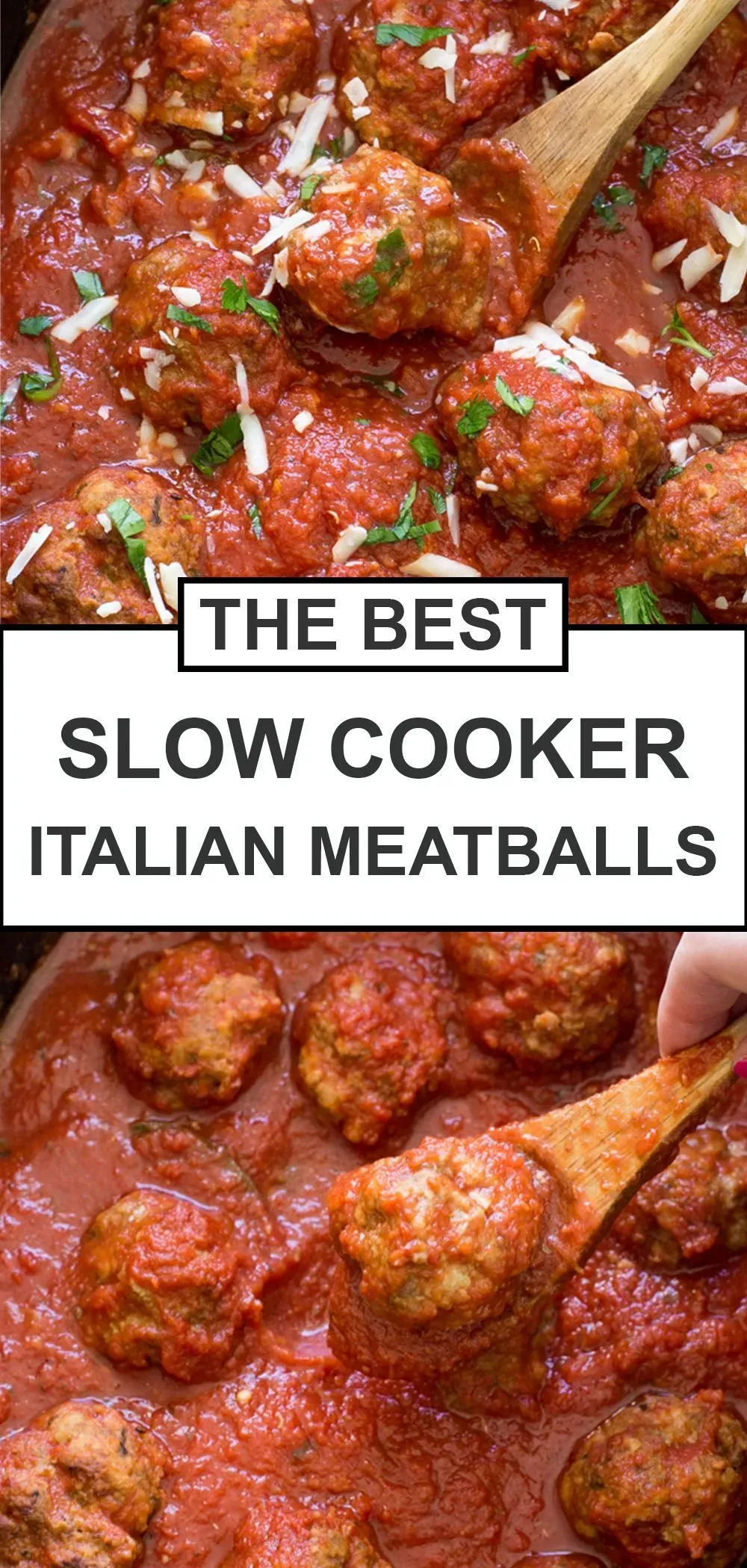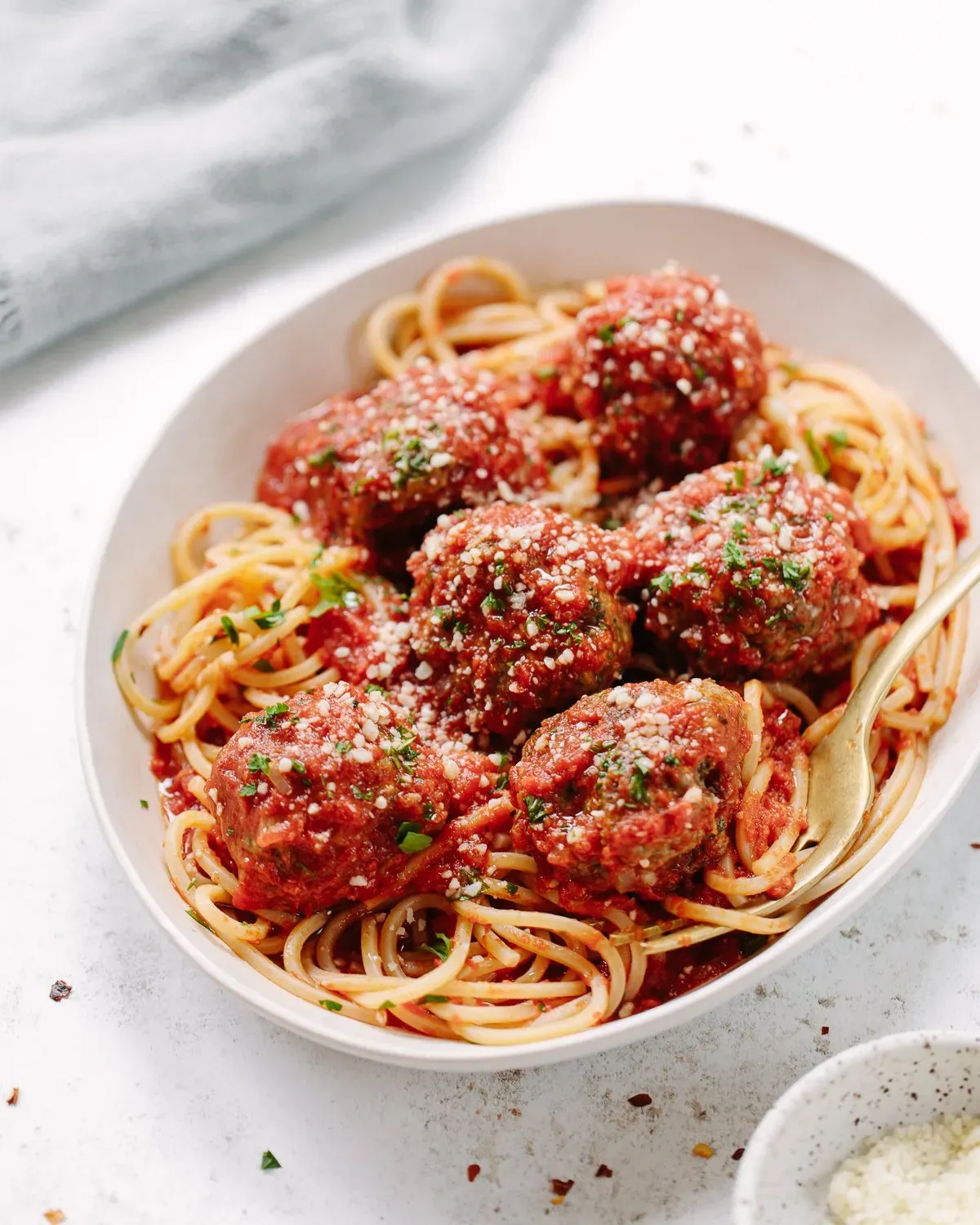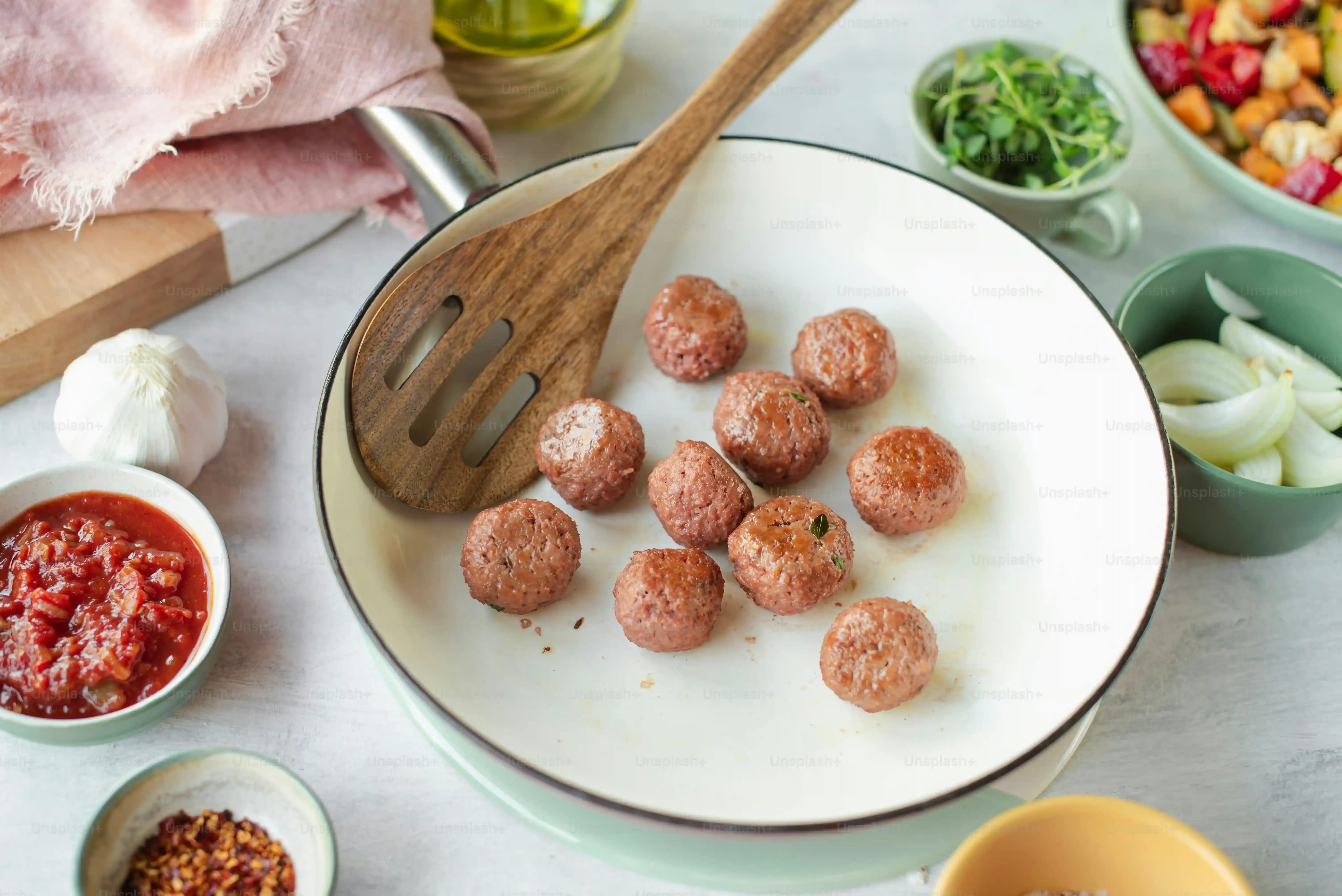Table of Contents
Let's be honest, you've probably had your share of sad, dense, flavorless meatballs masquerading as Italian. They sit there, heavy and uninspired, a disappointment on your plate. You want that perfect bite – tender, juicy, bursting with savory goodness that melts in your mouth. That's not too much to ask, is it? You're chasing the holy grail, the kind of meatball your nonna would nod approvingly at. Finding a true 5 star recipe for Italian meatballs can feel like searching for a needle in a haystack, especially with countless variations out there promising the world and delivering... well, disappointment.
What Makes a Truly 5 Star Recipe for Italian Meatballs?
Beyond Just Meat and Sauce
let's cut to the chase. What separates a truly 5 star recipe for Italian meatballs from the rest? It's not just about tossing some ground meat into tomato sauce and hoping for the best. A top-tier meatball is a symphony of texture and flavor. You want something tender, yes, but not mushy. Juicy, absolutely, but not greasy. And it needs to taste like something more than just cooked beef. It's about the subtle layers – the savory depth from the meat blend, the aromatic notes from garlic and herbs, the richness from cheese, and that almost creamy quality you get when everything comes together just right.
Avoiding the Hockey Puck Problem
Too many home cooks end up with meatballs that resemble rubber balls more than anything edible. Why does this happen? Often, it's overworking the meat mixture. When you mix aggressively, you develop the proteins, leading to a tough, dense texture. Think of it like kneading bread dough – great for bread, terrible for meatballs. Another culprit is skipping the binder, or using the wrong kind. You need something to hold it all together gently and, crucially, keep it moist during cooking. That's where the magic of a proper panade comes in, a simple mix that performs wonders.
So, what are the cardinal sins of meatball making?
- Mixing the meat like you're building a brick wall.
- Ignoring the role of a good binder.
- Using only one type of lean meat.
- Cooking them at too high a temperature for too long.
The Quest for Ultimate Tenderness and Flavor
Achieving that melt-in-your-mouth texture is paramount for a 5 star recipe for Italian meatballs. This comes down to several factors working in concert. The right ratio of fats to lean meat is critical – a mix of beef and pork, maybe even a little veal, provides moisture and complex flavor. The binder, often stale bread soaked in milk or water, creates little pockets that trap steam and fat as the meatball cooks, ensuring it stays juicy. And finally, the cooking method matters. While frying gives a nice crust, simmering in sauce or baking gently can lead to incredibly tender results, letting the flavors meld beautifully.
Assembling Your Dream Team: Ingredients for Your 5 Star Recipe for Italian Meatballs

Assembling Your Dream Team: Ingredients for Your 5 Star Recipe for Italian Meatballs
The Foundation: Choosing Your Meats Wisely
Alright, let's talk meat. This is where many recipes stumble right out of the gate. You can't just grab any old ground beef and expect magic. For a true 5 star recipe for Italian meatballs, you need a mix. A standard grocery store ground beef often has too much lean muscle and not enough fat for the kind of juicy tenderness we're after. A classic combination is ground beef and ground pork. The beef brings that deep, savory flavor, while the pork adds crucial moisture and richness. Some folks swear by adding a bit of ground veal for extra tenderness and a lighter texture, but beef and pork is a solid start. Think of it like building a team – you need players with different strengths working together.
Beyond the Meat: The Supporting Cast
Now, the supporting players are just as critical. This isn't just a meatball; it's a complex little flavor bomb. You need your binder, and I'm not talking about dry, dusty breadcrumbs straight from the box. We're making a panade. Soak some stale bread (crusts removed, please) in milk or water. This creates a creamy paste that integrates into the meat mixture, keeping it moist and tender as it cooks. Then comes the flavor: finely minced onion and garlic (don't skip the sautéing step first, it mellows them out beautifully), grated Parmesan cheese for that salty, nutty depth, fresh parsley for freshness, and a good pinch of salt and pepper. Some recipes call for eggs, which help bind, but don't go overboard; too many eggs can make them tough.
- Ground Beef (80/20 or 85/15 fat ratio)
- Ground Pork (adds moisture and flavor)
- Stale Bread (the base for your panade)
- Milk or Water (to soak the bread)
- Finely Minced Onion (sautéed)
- Minced Garlic (sautéed)
- Grated Parmesan Cheese
- Fresh Parsley
- Salt and Black Pepper
- Optional: Egg (use sparingly)
From Mix to Mouth: Crafting and Cooking Perfect Meatballs

From Mix to Mouth: Crafting and Cooking Perfect Meatballs
Mixing the Meatball Magic
Alright, you’ve got your ingredients prepped – the glorious meat mix, the soaked bread panade, the sautéed aromatics, the cheese, the herbs. Now comes the crucial step: combining it all. Resist the urge to just dump everything into a bowl and go at it like you're churning butter. This is where the "hockey puck" problem starts. You need to be gentle, almost reverent. Use your hands – it's the best tool here. Break up the meats first, then scatter the other ingredients over the top. Now, using a light touch, gently fold and mix everything together. You're not kneading dough; you're just encouraging the ingredients to become acquainted. Overmixing develops gluten in the bread and toughens the meat proteins. Stop as soon as everything is just combined. A slightly shaggy mix is far better than a smooth, dense one.
Cooking for Tenderness, Not Toughness
Once your mix is ready, it’s time to shape them. Grab a small amount, maybe about the size of a golf ball, and roll it gently between your palms. Don't pack them tight; remember, we're aiming for tender. Place them on a baking sheet. Now, about cooking. While searing in a pan gives you a nice crust, for ultimate tenderness that defines a 5 star recipe for Italian meatballs, I prefer baking or simmering directly in sauce. Baking them first at a moderate temperature (say, 375°F or 190°C) gets them cooked through gently and renders some fat without drying them out. Then, you can transfer them to your simmering tomato sauce to finish cooking and absorb all that wonderful flavor. Simmering them from raw directly in the sauce also works beautifully, yielding incredibly soft meatballs, but they won't hold their perfect round shape quite as well.
So, to recap the cooking phase:
- Shape gently, don't pack them tight.
- Baking first (375°F/190°C) offers control and tenderness.
- Simmering in sauce finishes them and infuses flavor.
- Simmering raw in sauce yields maximum tenderness but less shape retention.
- Avoid high heat that will toughen the exterior before the inside cooks.
Serving Up and Stashing Away Your Delicious Creation

Serving Up and Stashing Away Your Delicious Creation
The Grand Entrance: Serving Your Masterpieces
So, you've done it. You've crafted a batch of meatballs that don't resemble geological samples. Now comes the fun part: eating them. The classic pairing, of course, involves a slow-simmered tomato sauce. Drop your baked meatballs right into the gently bubbling sauce during the last 20-30 minutes of cooking. This lets them soak up all that rich tomato flavor while becoming incredibly tender. Serve them over a mountain of spaghetti, alongside creamy polenta, or even tucked into a crusty roll for a killer meatball sub. Don't be shy with the extra sauce and a final sprinkle of fresh Parmesan and parsley. This isn't the time for restraint.
Keeping the Dream Alive: Storage Solutions
Miraculously, you might have leftovers. This is a good problem to have. Proper storage ensures your hard work doesn't go to waste and that the meatballs remain delicious for future meals. Let them cool completely before packing them up. Stash them in an airtight container in the refrigerator. They'll keep nicely for about 3 to 4 days. For longer storage, freezing is your friend. You can freeze them cooked, either plain or submerged in sauce. Lay cooked, cooled meatballs on a baking sheet to freeze individually, then transfer to a freezer bag. Or, freeze them directly in containers with sauce. Frozen, they'll maintain quality for up to 3 months.
- Refrigerate cooked meatballs within 2 hours of cooking.
- Store in airtight containers.
- Good in the fridge for 3-4 days.
- Freeze cooked meatballs (with or without sauce) for longer storage.
- Use a freezer-safe container or bag.
- Best quality when frozen for up to 3 months.
Bringing Them Back: Reheating Without Ruin
Alright, time for round two. You've got those precious leftovers and you need to reheat them without turning them into dry little rocks. Zapping them in the microwave is the quickest way to commit a meatball crime. The best method? Gently reheat them in sauce on the stovetop over low heat. This warms them through evenly and keeps them moist. If they were frozen in sauce, just thaw them in the fridge overnight and reheat the whole glorious mess together. If they were frozen plain, you can add them to simmering sauce or reheat gently in a covered dish in the oven at a low temperature (around 300°F or 150°C) until heated through. Patience is key here; you want warm, tender meatballs, not shriveled husks.
Enjoying Your Hard-Earned 5 Star Meatballs
So there you have it. No magic, no ancient secrets, just solid technique and quality ingredients. You've bypassed the dry, flavorless imposters and crafted meatballs that are genuinely tender, juicy, and packed with real Italian flavor. This isn't just another recipe; it's a blueprint for consistent success. Go ahead, ladle that sauce over them, pile them onto pasta, or just eat them straight from the pot (we won't tell). You've earned this moment of delicious satisfaction. Now you know what a true 5 star recipe for Italian meatballs tastes like.